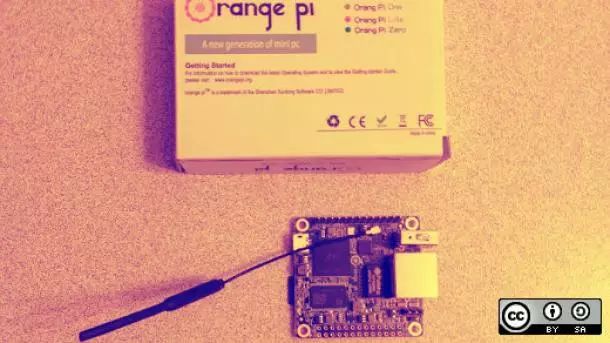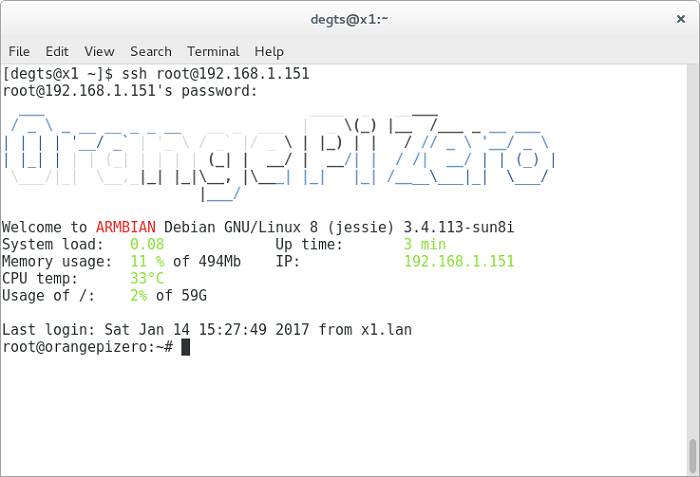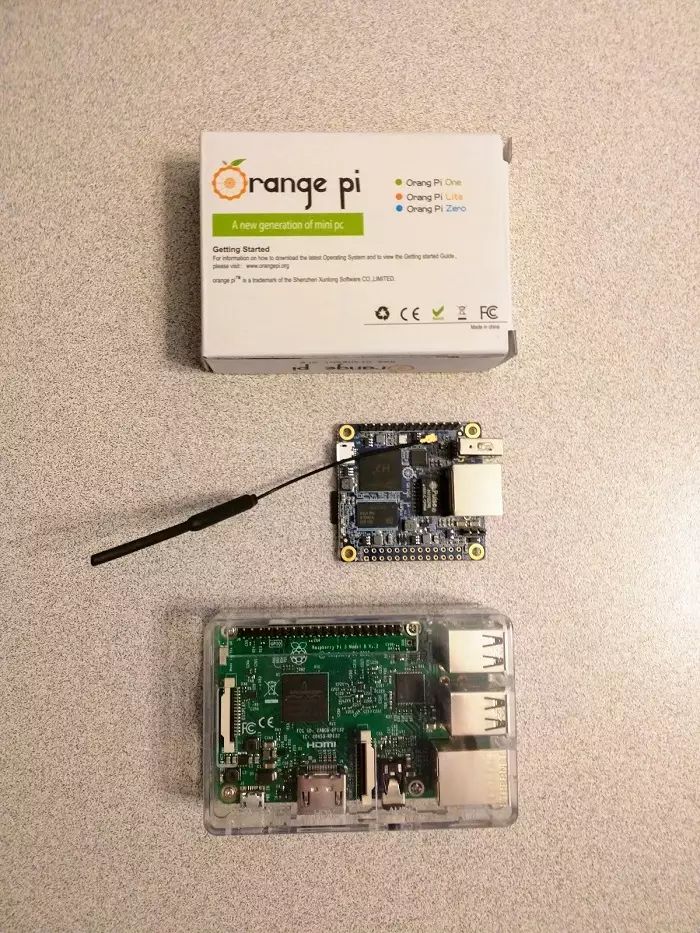
As open-source driven hardware becomes more mainstream, such as Arduino and Raspberry Pi, the costs of these open-source hardware continue to drop, opening doors for innovative IoT and STEM (LCTT note: STEM stands for Science, Technology, Engineering, Mathematics) software. I am interested in both and always keep an eye out for innovative points that can be applied to the education industry, such as classroom education and my daughter’s robotics team. When I heard that Orange Pi was superior to Raspberry Pi, I began to pay attention to Orange Pi.
Despite its slightly sour name, I was still captivated by the Orange Pi Zero. I recently purchased an Orange Pi Zero and will share my first experience in this article. Full disclosure: I am genuinely fascinated.
Why Orange Pi?
Orange Pi is part of a family of single-board computers driven by Linux, produced by Shenzhen Xunlong Software Co., Ltd. and sold on AliExpress. Shopping on AliExpress requires patience, planning ahead for 2 to 4 weeks of shipping time, as these products are shipped directly from mainland China to other parts of the world.
Unlike Raspberry Pi, which has fewer models but is gradually increasing and adding several models with different price points and features to the single-board computer family, Orange Pi has a richer variety of models. The good news is that you can choose what you need from a huge software library, but the bad news is that the selection range is simply too vast. In my experience, using the 512 MB version of Orange Pi Zero is sufficient, as this version strikes a good balance between functionality and price, suitable for high school and academic environments.
You can visit the Orange Pi Zero website to see high-definition images and all specifications.
The clear question is that I hope for the price of such a device to be as low as possible while being ready to use out of the box and able to connect to the internet for SSH and IoT applications to function properly. The Orange Pi Zero has onboard 10/100 M Ethernet and 802.11 b/g/n Wi-Fi modules to connect to the network to meet this requirement. It also has 26 GPIO ports compatible with Raspberry Pi for connecting IoT application sensors. I use the 512 MB version of Orange Pi Zero instead of the 256MB version because the benefits of having more memory are significant, and the two versions differ by only 2 dollars. Additionally, shipping costs $12.30, which is particularly cost-effective for classrooms that encourage active experimentation and creating magic smoke. (LCTT note: “creating magic smoke” is a humorous way to say that a device stops working for unknown reasons, originally used by electrical engineers and technicians, but has recently been adopted by programmers.)
Compared to the $5 Raspberry Pi Zero, the Orange Pi Zero is only a few dollars more, but it is easier to use right out of the box because it has an onboard internet connection module and a quad-core CPU, rather than a single-core. This onboard port makes the Orange Pi Zero easier to use than Raspberry Pi Zero, as Raspberry Pi Zero still requires a Micro-USB to USB adapter and a USB Wi-Fi to connect to the internet. When giving someone an IoT device as a gift, you certainly want them to be able to use the product quickly and easily, rather than giving them an incomplete product that just collects dust in the attic.
Unboxing Experience
Initially, I was concerned that the vendor and community support for Orange Pi would not be as good as that of the Raspberry Pi Foundation and Raspberry Pi community, and users would have to spend extra effort to get the device running. If that were the case, I would not recommend Orange Pi for classroom use and gift giving. However, the good news is that the Orange Pi Zero works very well and is easier to get running than Raspberry Pi.
Two weeks after ordering, the Orange Pi finally arrived at my home. I set it up in minutes after unpacking it. Most of the time was spent downloading the operating system. Orange Pi can run various operating systems, from Android to Debian series. I used Armbian, which is favored by Orange Pi fans. Since Armbian supports various ARM-based single-board computers, you need to choose the Armbian version suitable for Orange Pi Zero. Following the Armbian user guide, you can easily create a microSD image, then insert the microSD card and connect the network cable, plug in the 3A Micro-USB power adapter I used in Raspberry Pi, and finally log in via SSH to start using it.

SSH login to Orange Pi Zero
After connecting via Ethernet SSH, I could easily connect to my wireless access point using nmtui-connect. Then I executed the apt-get update && apt-get upgrade command, which executed faster than Raspberry Pi Zero, close to the performance of Raspberry Pi 3; others have also observed similar results. While the Orange Pi Zero may not outperform Raspberry Pi 3, I did not intend to use it for gene sequencing or mining bitcoins. Armbian automatically adjusts the root partition to use the entire microSD card space, which is a manual step that is easy to forget when using Raspbian. Finally, compared to the $35 Raspberry Pi 3, purchasing the $12 Orange Pi Zero allows more than three times as many students to have their own learning tools, and it can also be shared as a gift with three times as many friends.

Comparison of Orange Pi Zero and Raspberry Pi 3 in size and appearance
Final Thoughts
Orange Pi is undoubtedly a great solution to problems. Given its low cost, faster startup, and relatively quick performance, along with GPIO pins compatible with Raspberry Pi, Orange Pi, especially the Orange Pi Zero, should definitely be on your list of experimental equipment for your studio, classroom, or robotics team.
Of course, if you are already tired of using Orange Pi, feel free to share your reasons for disliking it below.
Author Bio:
David Egts – Chief Technology Expert for North America Public Sector at Red Hat. Enjoys playing drums, riding motorcycles, a computer geek, a husband, father, and educator. Follow me on Twitter @davidegts and check out my podcast.
via: https://opensource.com/article/17/1/how-to-orange-pi
Author: David Egts Translator: beyondworld Proofreader: jasminepeng
This article is originally compiled by LCTT and honorably published by Linux China

Recommended Articles
< Swipe to view related articles >







Enter article ID or long press the QR code to reach directly